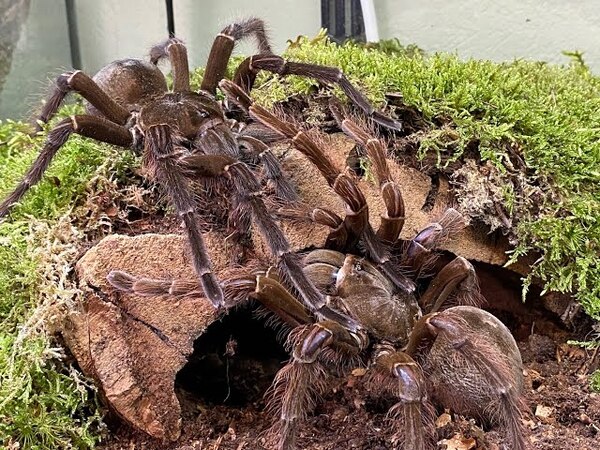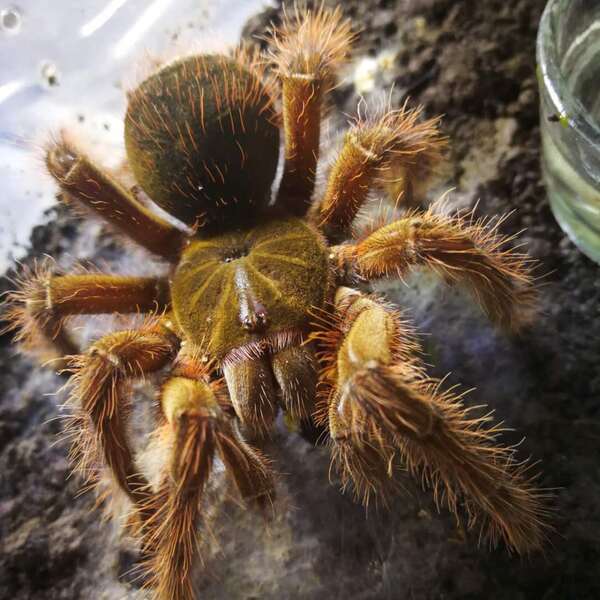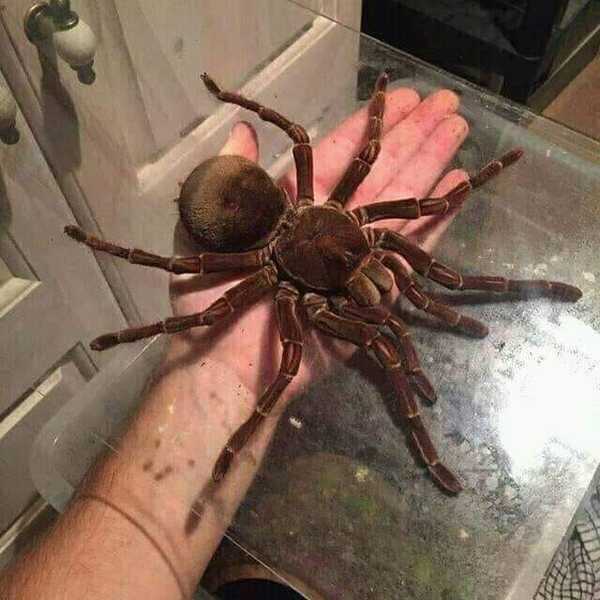The Theraphosa blondi, commonly known as the Goliath Birdeater or the Giant Monkey Spider, holds the title of the world’s largest spider species. Other popular names include the Giant Tarantula and Aviary Spider. While fearsome in size and appearance, this spider is a fascinating creature of the migalomorph family, known for its unique adaptations and surprising cultural significance.

Migalomorph spiders, such as Theraphosa blondi, are characterized by their large, parallel fangs (chelicerae) which move up and down without crossing. They have two pairs of spinnerets—glandular appendages that produce silk. Additionally, they have eight eyes, though their eyesight is quite poor.
The Theraphosa blondi is a colossal spider, thriving in hot, humid, and rainy environments. It has a robust body covered in brownish hair, sometimes with dark stripes on its legs. Its terrifying appearance is matched by its impressive size: when its legs are fully extended, it can reach up to 28–30 cm (11–12 inches), and its body weighs approximately 100 g, with some reports indicating individuals weighing as much as 150 g.
The Goliath Birdeater is native to the rainforests of South America, particularly in regions of Bolivia, Brazil, Colombia, Guyana, Venezuela, and possibly Ecuador and Peru. Despite being commonly referred to as a tarantula, this term is actually a misnomer derived from the European spider Lycosa tarantula, found in southern Italy.
Female Theraphosa blondi spiders are notably larger than their male counterparts. They reach sexual maturity at around three years of age. Before mating, the male is attracted to a pheromone released by the female. These spiders can live up to 14 years in the wild, with those in captivity reaching up to 25 years. Males, however, have a much shorter lifespan. Due to their longevity and exotic nature, Goliath Birdeaters are sold as pets, though this practice threatens their sustainability in the wild due to over-collection.

As nocturnal hunters, Goliath Birdeaters are rarely seen during the day. Females typically remain in burrows, while males hunt near their nests. Their diet consists of invertebrates like centipedes, cockroaches, earthworms, beetles, and crickets. Despite their name, they seldom eat birds, though they are capable of doing so.
Theraphosa blondi spiders are solitary, coming together only during mating season. After mating, females lay between 50 to 200 eggs inside their burrows. These eggs hatch after about six weeks.
Although the venom of Theraphosa blondi is not lethal to humans, its bite can be painful, lasting up to 48 hours. Additionally, this spider has a unique defense mechanism: it uses its hind legs to flick urticating hairs into the air, which can cause severe irritation to the eyes and skin of potential predators or threats.
In certain indigenous Amazonian communities, the Goliath Birdeater is not only respected but also eaten. Native people coax these spiders out of their burrows by inserting sticks and then roast them over an open fire to singe off the irritating hairs. Only the cephalothorax and legs are consumed, with the taste reportedly similar to shrimp.
The Yanomami people, who live in the Amazonian regions along the Venezuela-Brazil border, are known for consuming a wide variety of invertebrates, including the Goliath Birdeater. They roast and season the spider before eating it. In addition to the Goliath Birdeater, the Yanomami also consume two other spider species, Heteropoda venatoria and Hobtele waikashiemi. The Yekuana people, another indigenous group, consume many invertebrates but do not eat the Goliath Birdeater.

The Goliath Birdeater is more than just a fearsome spider. Its role in both the ecosystem and in the cultures of Amazonian communities is intriguing. While its venom poses little danger to humans, it is still a creature that commands respect and awe due to its size, adaptability, and long-standing presence in the folklore and diets of indigenous people.
animal tags: Goliath-Birdeater
We created this article in conjunction with AI technology, then made sure it was fact-checked and edited by a Animals Top editor.